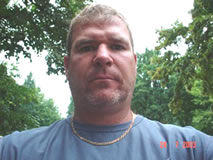
Psychological warfare
 The art of being able to rock your opponent and sow a seed of doubt is crucial to success in tennis.
The art of being able to rock your opponent and sow a seed of doubt is crucial to success in tennis. I call this “finding a way to make a statement of intent”. There are various ways of achieving this and they are laid out for you here:-
How to make a statement
-
Hit a ‘Big Shot’ from the baseline that is a winner.
-
Make a good play off opponent's best shot. (When you know what your opponent's favourite weapon is make a point of reading it once so you can reply with a tough shot)
-
Hit a service ace on a big point.
-
Three to four big first serves in a row.
-
Serve a bullet right at them. (This is also very effective as a second serve if your opponent continually stands in close and is intent on attacking your 2nd serve)
-
Standing in on 2nd serve. (Show your intent to take on opponent's 2nd serve)
-
Show an opponent you are keen and eager by showing clear intention of how you will attack their serve by:
-
Good execution of a return.
-
Jig and move about. Show an opponent a different look before opponent serves.
-
Jog to your chair if you have broken serve or gotten very close to breaking.
-
-
Dictate speed of the change of ends.
-
Bring opponent in and smack the passing shot straight at opponent.
-
Chip charge a second serve or hit and come in off a 2nd serve.
-
Bury a smash.
-
Big shot off a big 1st serve. Read one so you can anticipate early achieving a solid hit.
-
Give your opponent a totally different look before your opponent serves by changing your return position. (It must be obvious enough for him/her to notice either by standing closer in, further back or over to one side.)
-
Make noise as you hit the ball. (Louder grunt or exhalation of air)
-
Use humour. (An instance of this would be after they hit a winner just smile and acknowledge the play, or after you’ve missed a sitter smile and turn away, or if they hit a ball right at you just give a wry smile)
-
Stand tall with a solid stare down the court before you serve.
-
Lingering look after a good volley.
-
Speed used to chase every ball with intent to hit them back with control.
-
Strong raised fist after a break of serve.
-
The aggressive self talks “I can do this! I love fighting for every point! I can fight and be cool in my mind at the same time!”
-
The aggression to use the first chance you get after they have made a statement. (This is a huge key to recovering your composure when you have been hurt by your opponent’s big play.)
-
First point of a game. Hit a big serve, or serve and volley to show your intent to win the game strongly. On return, try attack or return a solid ball with full focus again, to show that your opponent will have to fight for every point to hold serve.
-
Be prepared to do something totally different to try swing the momentum your way if you are totally out of the match. (Sudden drop-shot, a game of no pace, go for high-risk winners for a game, or even serve a 1st serve underarm.)
by David Sammel

